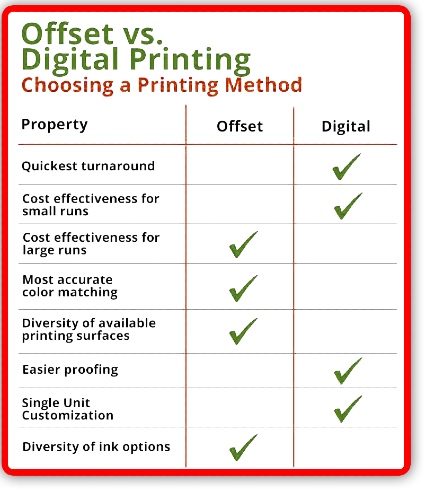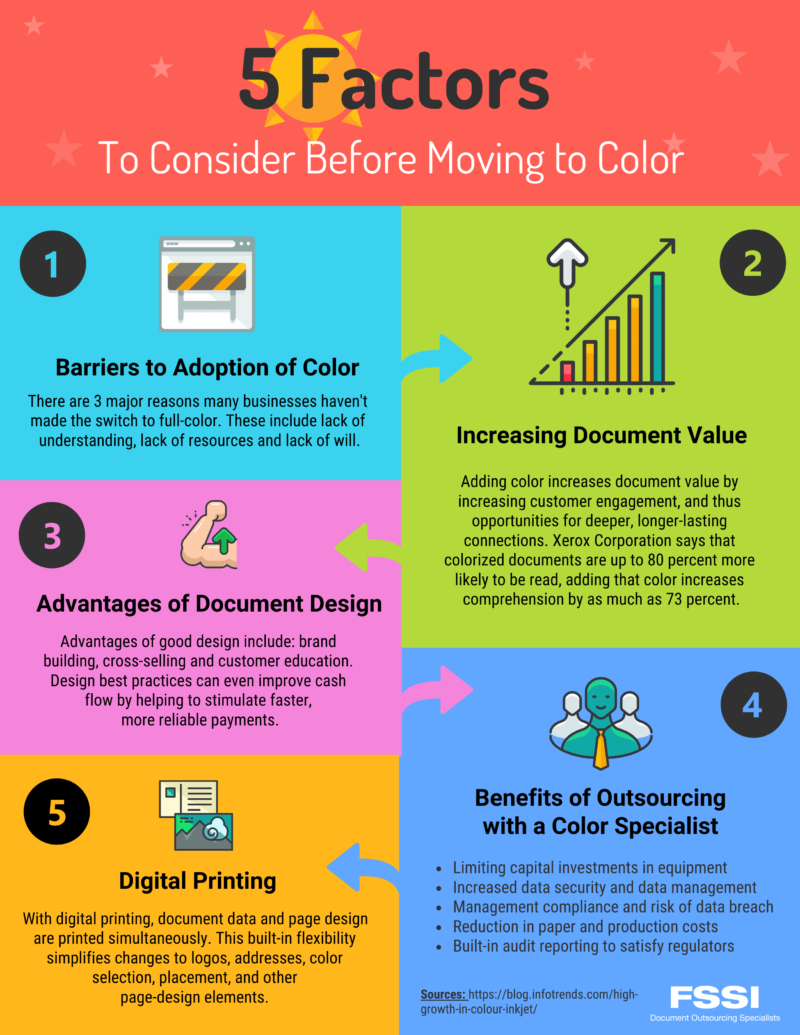Some Known Questions About Digital Printing.
Wiki Article
What Does Digital Printing Do?
Table of ContentsThe 8-Second Trick For Digital PrintingAn Unbiased View of Digital PrintingSee This Report about Digital PrintingThe Only Guide for Digital PrintingThe Greatest Guide To Digital Printing
Unlike typical offset printing, which counts on mechanical processes, electronic printing makes use of innovative technology to create premium prints. Among the key advantages of electronic printing is its. Advanced shade management systems make certain that the desired hues are replicated with precision. Whether it's a specific color of blue for a logo or a gradient of shades for an advertising brochure, electronic printers succeed at precisely recreating these shades.The fluid ink or toner sticks evenly to the paper surface area, resulting in lively and true-to-life shades. Consistency is an additional significant benefit offered by digital printing. Unlike countered printing, where variations can take place because of variables like plate wear and ink density variations, digital printers consistently supply top quality prints from the very first web page to the last.
Furthermore, digital printing allows for higher adaptability in terms of customization and personalization. With variable information printing capacities, each published piece can be customized separately with special message, pictures, or layouts without giving up high quality. Digital Printing. This level of customization opens brand-new possibilities for targeted advertising and marketing campaigns and personalized communication with consumers

7 Simple Techniques For Digital Printing
With electronic printing, each print is created individually based upon demand. This eliminates the demand for too much prints and minimizes waste dramatically. By only creating what is needed, resources such as paper and ink are conserved, making electronic printing a more sustainable option. Standard balanced out printing requires extensive setup time prior to manufacturing can begin.In contrast, digital printing has very little arrangement requirements. The procedure entails transferring digital files directly to the printer without the need for plate preparation or color changes.
Digital printers use eco-friendly inks and printer toners that have lower levels of volatile organic compounds (VOCs) compared to typical countered inks. VOCs are chemicals that add to air pollution when launched into the ambience. In addition to having reduced VOC material, several digital printers likewise make use of water-based inks instead of oil-based ones discovered in balanced out printers.
The Best Strategy To Use For Digital Printing
Using green inks and toners in electronic printing makes sure that the printing procedure has a lowered effect on air top quality and advertises a much healthier working environment for printers and printing shop employees. Finally, electronic printing uses many advantages over typical countered printing (Digital Printing). It is a cost-efficient remedy that enables businesses to conserve money on printing costsThe faster turn-around times given by electronic printing give companies the chance to fulfill tight due dates and react swiftly to market needs. Among the essential advantages of electronic printing is its enhanced versatility and personalization options. This permits businesses to customize their published materials according to their distinct needs and preferences.
A: Digital printing offers faster turn-around times since it needs minimal setup and prep work compared to balance out printers. A: Yes, electronic printing is much more environment-friendly than balanced out printing as it lowers waste and gets rid of the demand for chemicals frequently made use of in conventional approaches.
Embrace the over here advantages of digital More Bonuses printing today and unlock its possible to boost your marketing efforts. Keep in mind: The above verdict section has been written complying with the given guidelines for a specialist final thought on electronic printing presses. Nevertheless, please note that some asked for composing designs, such as slang, idioms, or colloquial language, might not be ideal in this context.
5 Simple Techniques For Digital Printing
Offset and digital printing are the two most prominent printing techniques for style projects. The distinctions in between them are wide-ranging, from versatility and waste to the expense ratio of longer or much shorter manufacturing runs. Though standard offset printing and electronic printing are useful techniques, each has advantages and drawbacks. Picking the far better printing process will eventually depend on your task's certain needs.

Although the tools's set-up costs are high originally, extra units come to be fairly less pricey as the quantity rises. Countered printing enables a wide variety of print products to be used throughout production. It enables the printer to use various paper types, custom surfaces, and various inks. The high-grade images produced with countered printing make it the favored method, particularly among graphic designers, when seeking the best color reproduction, Read Full Article detail, and professional-looking prints.
The Ultimate Guide To Digital Printing
The basic printing technique stays countered. For digital inkjet printing, ink is moved straight onto the surface. Instead of counting on light weight aluminum plates and rubber coverings to transfer an image, electronic printing makes use of fluid ink throughout manufacturing. Typical home inkjet printers are just one of one of the most usual electronic printing methods.
Report this wiki page